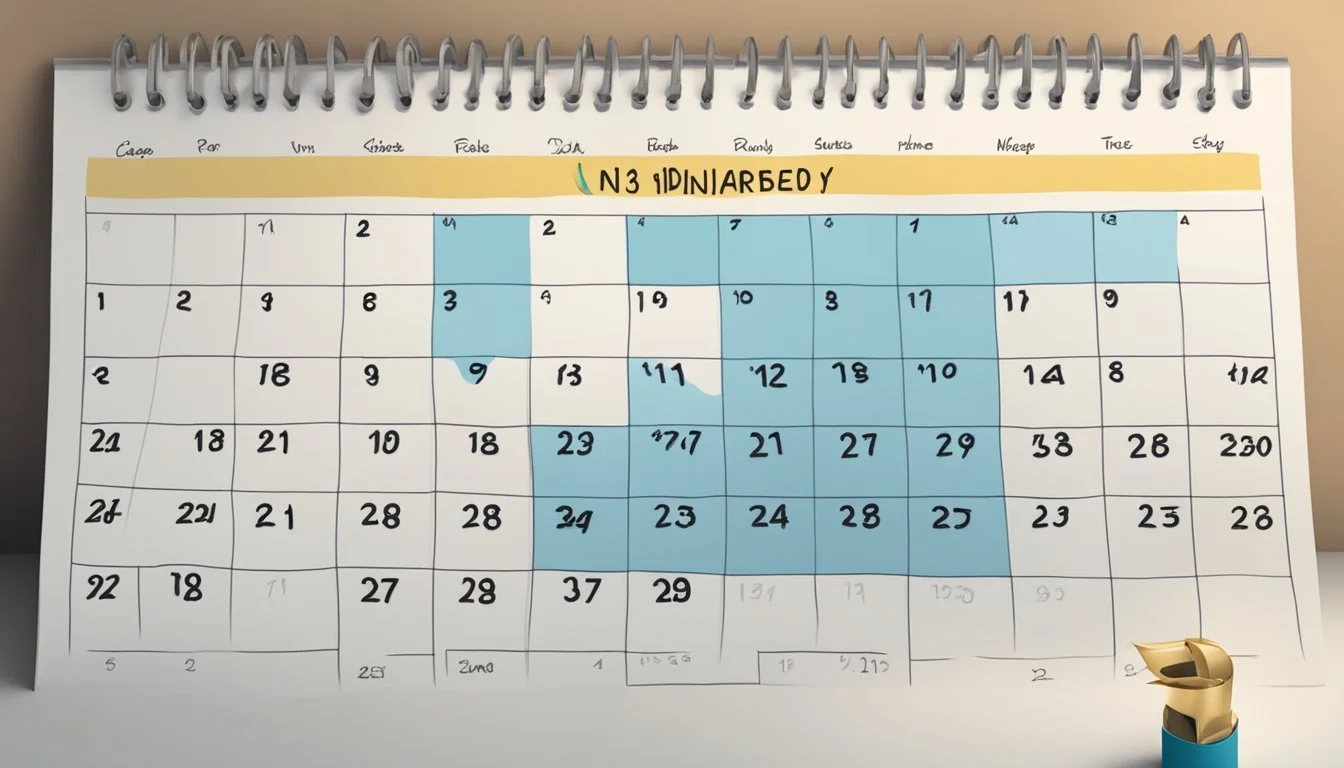The Chilling Truth: How Long Was JonBenét Ramsey Missing Before the Unthinkable Happened?
The disappearance and murder of JonBenét Ramsey shocked the nation in December 1996. The six-year-old beauty queen was reported missing from her family's home in Boulder, Colorado, on December 26th. JonBenét Ramsey was officially missing for approximately seven hours before her body was discovered in the basement of her own house.
The case began when Patsy Ramsey, JonBenét's mother, called the police at 5:52 a.m. to report her daughter missing. Boulder Police Department officers arrived at the Ramsey home shortly after and began a search of the premises. Initially, the case was treated as a kidnapping based on a ransom note found by Patsy.
The search for JonBenét came to a tragic end when her father, John Ramsey, found her body in the basement around 1:00 p.m. that same day. The discovery transformed the missing person case into a homicide investigation. JonBenét had sustained a fractured skull, and a garrote was found tied around her neck.
Timeline of Events
JonBenét Ramsey's disappearance and murder unfolded rapidly over the course of December 26, 1996. Key events occurred in quick succession from the early morning discovery to the tragic afternoon outcome.
Discovery of the Ransom Note
At approximately 5:30 AM on December 26, 1996, Patsy Ramsey discovered a 2.5-page handwritten ransom note on the kitchen staircase of her Boulder, Colorado home. The note demanded $118,000 for the safe return of JonBenét.
Patsy immediately went to check on her daughter, finding JonBenét's bed empty. She alerted her husband John and began searching the house.
Report to Boulder Police
At 5:52 AM, Patsy Ramsey called 911 to report JonBenét missing. Boulder Police officers arrived at the Ramsey home within minutes of the call.
Initial responding officers conducted a cursory search of the house but did not locate JonBenét. They advised the Ramseys to contact friends and family for support during the crisis.
Initial Search Efforts
Police began interviewing the Ramseys and gathering information about potential suspects. Friends and family arrived to offer support and assist with the search.
Officers requested specialized units, including detectives and crime scene technicians. The FBI was also notified and began offering assistance.
At around 1:00 PM, Detective Linda Arndt suggested John Ramsey and a friend search the house again. During this search, John discovered JonBenét's body in the basement wine cellar at approximately 1:05 PM.
The Ramsey Family
The Ramsey family consisted of parents John and Patsy Ramsey and their two children, Burke and JonBenét. Their lives were forever changed by the tragic events of December 26, 1996.
John and Patsy Ramsey
John Ramsey was a successful businessman who founded and led Advanced Product Group, a computer services company. Patsy Ramsey, a former beauty queen, was actively involved in her daughter's pageant activities.
The couple met in Atlanta and married in 1980. They moved to Boulder, Colorado in 1991. John and Patsy were thrust into the spotlight after JonBenét's murder, facing intense scrutiny and suspicion.
Despite being cleared by DNA evidence in 2008, public speculation about their involvement persisted. Patsy passed away from ovarian cancer in 2006, never seeing a resolution to her daughter's case.
Burke Ramsey
Burke Ramsey was nine years old at the time of his sister's murder. As the only other person known to be in the house that night, he faced questions and speculation.
Burke was interviewed by police and psychologists in the days following the crime. He maintained he was asleep during the incident.
In 2016, Burke broke his silence in a series of televised interviews. He sued CBS for defamation after a documentary suggested he might have been involved in his sister's death.
Burke has consistently denied any involvement in JonBenét's murder and continues to support efforts to find the true perpetrator.
Investigation by Law Enforcement
Law enforcement agencies launched an extensive investigation into JonBenét Ramsey's disappearance and murder. Multiple organizations were involved, including local police, federal authorities, and specialized teams.
Boulder Police Department's Response
The Boulder Police Department led the initial response on December 26, 1996. Officers arrived at the Ramsey home after receiving a 911 call reporting JonBenét missing. They conducted a search of the house and surrounding area.
Detective Linda Arndt was the first detective on the scene. She remained with the family throughout the day. At 1:05 PM, JonBenét's father John Ramsey discovered her body in the basement.
The police faced criticism for their handling of the crime scene. Some experts argued that crucial evidence may have been contaminated or lost due to improper procedures.
Involvement of the FBI
The FBI provided support to the Boulder Police Department throughout the investigation. They assisted with evidence analysis and offered resources from their behavioral science unit.
Agents conducted interviews with family members and potential witnesses. The FBI's lab examined DNA evidence found at the crime scene.
In 2016, the agency used new DNA testing techniques to reexamine evidence from the case. This analysis aimed to uncover new leads or potential suspects.
Colorado Cold Case Review Team
The Colorado Cold Case Review Team became involved in the Ramsey case years after the initial investigation. This team specializes in reviewing unsolved homicides and long-term missing person cases.
In 2009, the team conducted a comprehensive review of the evidence and case files. They examined physical evidence, witness statements, and investigative reports.
The team's efforts led to new DNA testing and the development of additional investigative strategies. Their work continues to support ongoing efforts to solve the case.
Evidence and Forensic Analysis
The JonBenét Ramsey case involved complex forensic analysis and evidence collection. Key elements included autopsy findings, DNA testing, and crime scene investigation techniques.
Autopsy Findings
JonBenét's autopsy, conducted on December 27, 1996, revealed crucial details about her death. The coroner found evidence of strangulation and sexual assault. A skull fracture indicated blunt force trauma to the head.
The official cause of death was asphyxia by strangulation associated with craniocerebral trauma. The autopsy also noted small abrasions and bruises on her body.
Toxicology reports showed no drugs or toxins in her system. The time of death was estimated to be between 10 PM on December 25 and 2 AM on December 26.
DNA Testing Advances
DNA evidence played a significant role in the investigation. Male DNA was discovered on JonBenét's underwear and longjohns. This DNA did not match any family members or known suspects.
Advanced DNA testing techniques were applied to the case over the years. In 2008, touch DNA analysis identified genetic markers from an unknown male on JonBenét's clothing.
Recent developments in genetic genealogy have raised hopes for new leads. Investigators continue to explore ways to utilize DNA databases to potentially identify the unknown male contributor.
Crime Scene Investigation
The initial crime scene investigation faced challenges due to contamination. Many people entered the Ramsey home before it was properly secured, potentially compromising evidence.
Key pieces of evidence included:
A ransom note found inside the house
Fibers from various sources on JonBenét's body
A broken window in the basement
Duct tape found on JonBenét's mouth
Investigators used luminol to detect traces of blood not visible to the naked eye. They also collected handwriting samples from family members and associates for comparison with the ransom note.
The basement window showed signs of possible forced entry, but opinions differ on whether it was staged or genuine.
Potential Suspects and Theories
The JonBenét Ramsey case generated several suspects and theories over the years. Investigators pursued various leads, from family members to potential intruders, in their efforts to solve the crime.
John Mark Karr's Confession
In 2006, John Mark Karr made headlines with his confession to JonBenét's murder. He claimed to have been with her at the time of her death, providing detailed accounts of the crime.
Karr's confession initially seemed promising to investigators. However, DNA evidence failed to link him to the crime scene.
Authorities ultimately determined that Karr's confession was false. He had no verifiable connection to the Ramsey family or Boulder, Colorado at the time of the murder.
Intruder Theory
The intruder theory suggests that an unknown person entered the Ramsey home and committed the crime. Supporters of this theory point to several pieces of evidence:
An unidentified male DNA sample found on JonBenét's clothing
A broken basement window
Possible footprints in the basement
Unidentified palm print on the wine cellar door
Critics argue that there were no signs of forced entry and question how an intruder could have navigated the house undetected.
Inside Job Speculation
Some investigators and members of the public speculated that someone within the Ramsey household was responsible for JonBenét's death. This theory focused primarily on her parents, John and Patsy Ramsey.
Key points of suspicion included:
The ransom note was written on paper from the Ramsey home
Handwriting analysis suggested similarities to Patsy's writing
Questions about the family's behavior after reporting JonBenét missing
Despite intense scrutiny, no charges were ever filed against the Ramseys. They maintained their innocence throughout the investigation.
DNA evidence found in 2008 appeared to support the intruder theory, leading to public apologies from some law enforcement officials who had previously suspected the family.
Public and Media Impact
The JonBenét Ramsey case sparked an unprecedented media frenzy and captivated public attention for years. Its impact extended far beyond the immediate investigation, shaping true crime coverage and public perceptions of child safety.
Media Coverage and Sensation
The case dominated headlines and airwaves almost immediately after JonBenét's disappearance. News outlets provided round-the-clock coverage, analyzing every detail of the investigation.
Television networks aired specials and documentaries, dissecting evidence and interviewing experts. Print media published extensive articles and featured the case on magazine covers.
The internet, still in its early stages, became a hub for amateur sleuths to discuss theories and share information. Online forums and websites dedicated to the case proliferated.
This intense media scrutiny placed enormous pressure on law enforcement and the Ramsey family. It also raised questions about the ethics of covering crimes involving children.
Influence on Public Perception
The extensive media coverage significantly shaped public opinion about the case. Many people formed strong views based on the information presented in news reports and true crime shows.
The public's fascination with the case led to widespread speculation and amateur detective work. Theories about potential suspects and motives spread rapidly through various channels.
This intense public interest sometimes hindered the official investigation. It created challenges for law enforcement in separating credible leads from noise generated by media speculation.
The case also sparked debates about child beauty pageants and the potential risks associated with them. It raised awareness about child safety and prompted many parents to reassess their own security measures.
JonBenét's Legacy in Media
JonBenét's case has left a lasting impact on true crime media. It remains a frequent subject of books, documentaries, and podcasts, with new content still being produced decades later.
The case has become a benchmark for high-profile unsolved crimes, often referenced in discussions of other mysterious cases. It continues to captivate new generations of true crime enthusiasts.
Media portrayals of JonBenét have evolved over time, with more recent coverage often taking a more critical look at the initial investigation and media frenzy. This shift reflects changing attitudes towards crime reporting and victim privacy.
The enduring public interest in the case has kept pressure on authorities to continue investigating, leading to periodic reviews and new approaches to evidence analysis.
Legal Proceedings and Grand Jury
The JonBenét Ramsey case involved complex legal proceedings and a grand jury investigation that lasted over a year. Despite extensive deliberations, no indictments were initially made public, leaving many questions unanswered.
Grand Jury Involvement
A grand jury convened in 1998 to review evidence in the Ramsey case. The proceedings continued for 13 months, concluding in October 1999. During this time, the jury heard testimony from numerous witnesses and examined forensic evidence collected from the crime scene.
The grand jury's role was to determine if there was sufficient evidence to bring charges against any suspects. Their deliberations were conducted in secret, as is standard for grand jury proceedings.
Lack of Prosecution
Despite the lengthy investigation, no one was prosecuted for JonBenét's murder following the grand jury's conclusion. Then-District Attorney Alex Hunter announced that there was insufficient evidence to file charges against anyone.
In a surprising turn of events, sealed court documents released in 2013 revealed that the grand jury had actually voted to indict John and Patsy Ramsey on charges related to child abuse resulting in death. However, Hunter chose not to sign the indictments, citing a lack of sufficient evidence to secure a conviction.
This decision highlighted the complexities of the case and the challenges faced by the justice system in resolving it. The lack of prosecution left the case open and the investigation ongoing.
Aftermath and Ongoing Developments
The JonBenét Ramsey case remains unsolved despite decades of investigation. Advancements in forensic technology and continued public interest have kept the case active, with investigators pursuing new leads and reexamining evidence.
Cold Case Status
The Boulder Police Department maintains the JonBenét Ramsey homicide as an open investigation. Detectives continue to review leads and evidence, working with state and federal law enforcement agencies. The case has been reviewed multiple times by fresh eyes, including cold case experts and outside consultants.
In 2009, the Boulder District Attorney's office removed the Ramsey family from the suspect list. This decision came after new DNA evidence pointed to an unknown male suspect. The move signaled a shift in the investigation's focus and sparked renewed efforts to identify the perpetrator.
Advancements in DNA Technology
DNA technology has played a crucial role in the ongoing investigation. In 2008, touch DNA analysis revealed genetic material from an unknown male on JonBenét's clothing. This discovery led to the exoneration of the Ramsey family members.
Recent developments in genetic genealogy have offered new hope for solving cold cases. Investigators are exploring the possibility of using this technology to identify potential suspects through familial DNA matches. The technique has successfully resolved other long-standing cases, prompting optimism in the JonBenét investigation.
Law enforcement agencies continue to retest evidence using the latest DNA analysis methods. These efforts aim to uncover new genetic information that could lead to a breakthrough in the case.
Search for Closure
The quest for justice in JonBenét's murder remains a priority for both law enforcement and the public. Her family continues to advocate for the case, pushing for new investigations and the use of advanced forensic techniques.
Media coverage and public interest have kept the case in the spotlight, generating tips and theories. Documentaries, books, and news specials regularly revisit the mystery, ensuring it stays in the public consciousness.
The Boulder Police Department maintains a dedicated tip line for the case. They encourage anyone with information to come forward, emphasizing that even small details could prove crucial in solving the homicide.
JonBenét Ramsey's Biography
JonBenét Ramsey was a child beauty queen whose tragic death shocked the nation. Her short life was marked by pageant success and a loving family, but her murder remains unsolved to this day.
Early Life and Pageant Career
JonBenét Patricia Ramsey was born on August 6, 1990, in Atlanta, Georgia. She was the daughter of John and Patsy Ramsey. The family later moved to Boulder, Colorado.
From a young age, JonBenét participated in child beauty pageants. She won numerous titles, including Little Miss Colorado and National Tiny Miss Beauty.
Her mother, a former beauty queen herself, encouraged JonBenét's participation in these events. The young girl's natural charm and talent shone through in her performances.
Impact of Her Death on Beauty Pageants
JonBenét's murder in 1996 cast a dark shadow over the world of child beauty pageants. The case sparked intense media scrutiny and public debate about the appropriateness of such competitions for young children.
Many critics argued that these pageants sexualized children and put them at risk. Some pageant organizers implemented stricter safety measures in response to the tragedy.
The controversy led to a decline in participation in child beauty pageants. Some parents became more hesitant to involve their children in these events.
JonBenét's case continues to influence discussions about child safety and the ethics of beauty competitions for young girls.









